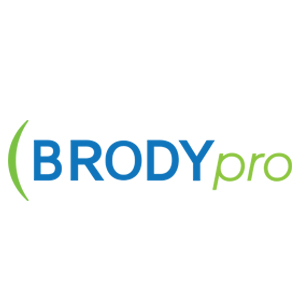 I start off today’s blog with a reminder from Mother Nature about how powerful she can be ,,,
I start off today’s blog with a reminder from Mother Nature about how powerful she can be ,,,
Since Wednesday, BRODY offices have been closed, due to losing power and phone lines post ice-storm. We are all able to have limited access to e-mail messages. Here’s a list of staff e-mail. We hope that power is back up by Monday, 2-10. Thank you for your ongoing patience! We will be posting updates on our website and blog as they become available.
Now, on to our regularly scheduled blog … an important topic for business professionals to remember about business etiquette in our 24/7 digital age.
Business etiquette in the digital age comes with its own set of totally new rules and challenges – mainly related to the proliferation of social media websites where people can (and, unfortunately sometimes do), overshare personal details and opinions. I’m not talking business blogging here.
To “friend” or not to “friend” to “follow” or not … apparently these are some of the new questions those seeking to network online are asking. And they are particularly important questions on business networking sites such as LinkedIn and Google+.
I believe that networking, building advocates and finding mentors – whether in person or online — can all be very important to your career growth.
With the popularity of social media, you can now open that up to relationships well outside of your local geographic area, or even out of the country.
Do you network on Google+ or LinkedIn? If so, I have 6 reminders to help make every connection successful.
- Look at someone’s profile before automatically agreeing to friend or add him or her to your network. Make sure you are not clogging up your network with people who are spammers or not legitimate and those looking for a social-only connection and not a professional, business relationship. A good rule of thumb: No photo nor profile, no connection.
- Be cautious as to whom you endorse or refer. It’s fine to make a connection between two online contacts, but if you don’t know the quality of either party’s work and have never worked with them, be sure to make that clear. Make sure it’s not a recommendation, just an introduction.
- To make more connections with potential clients, peers, or advocates, participate in groups focused on your area of work. Once you are connected with these groups, now what? Offer interesting topical content you’ve seen on the web, along with a thought- provoking question or a well-considered opinion. But be very careful about those opinions … if you would not voice it in the boardroom or at a client lunch, then you should not even consider putting it out online.
- You could also post a question about something you need help with. This is called crowdsourcing information, and is a terrific way to meet experts online and build relationships.
- Consider your profile photo as carefully as you’d consider your attire for an important business meeting. After all, it will be around for quite a while and be seen by countless people. So, consider the impression it will make. Does it present you clearly and professionally?
- On any social media site, be careful as to the content you post. The fact is, more and more potential employers are not just looking for new hires online — they are also checking out any potential candidates who apply for interviews online as well as vendors to partner with. Are you a big partier? You might want to keep that to yourself. Fond of four-letter words? Don’t put them out in public. Please.
Social media success does depend on being social, so get involved, make friends, and build your network — but please don’t “let it all hang out.”
If you treat social networking sites with the same professionalism you would bring to in-person networking events, you should find it a terrific way to make new contacts, find new business opportunities, and much more.
I’d like to recommend a terrific eBook, offered by the world’s largest specialized staffing, Robert Half. It’s called “Business Etiquette: the new rules in a digital age,” and you can download it for free.
